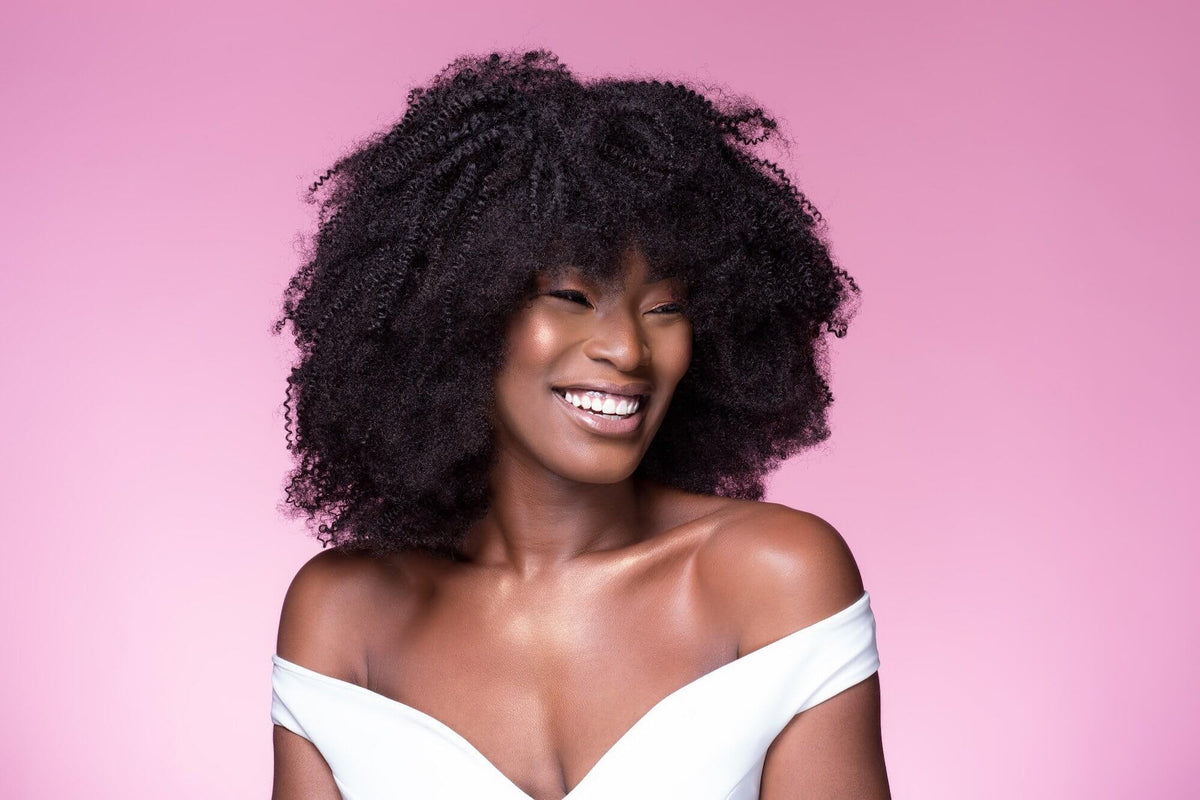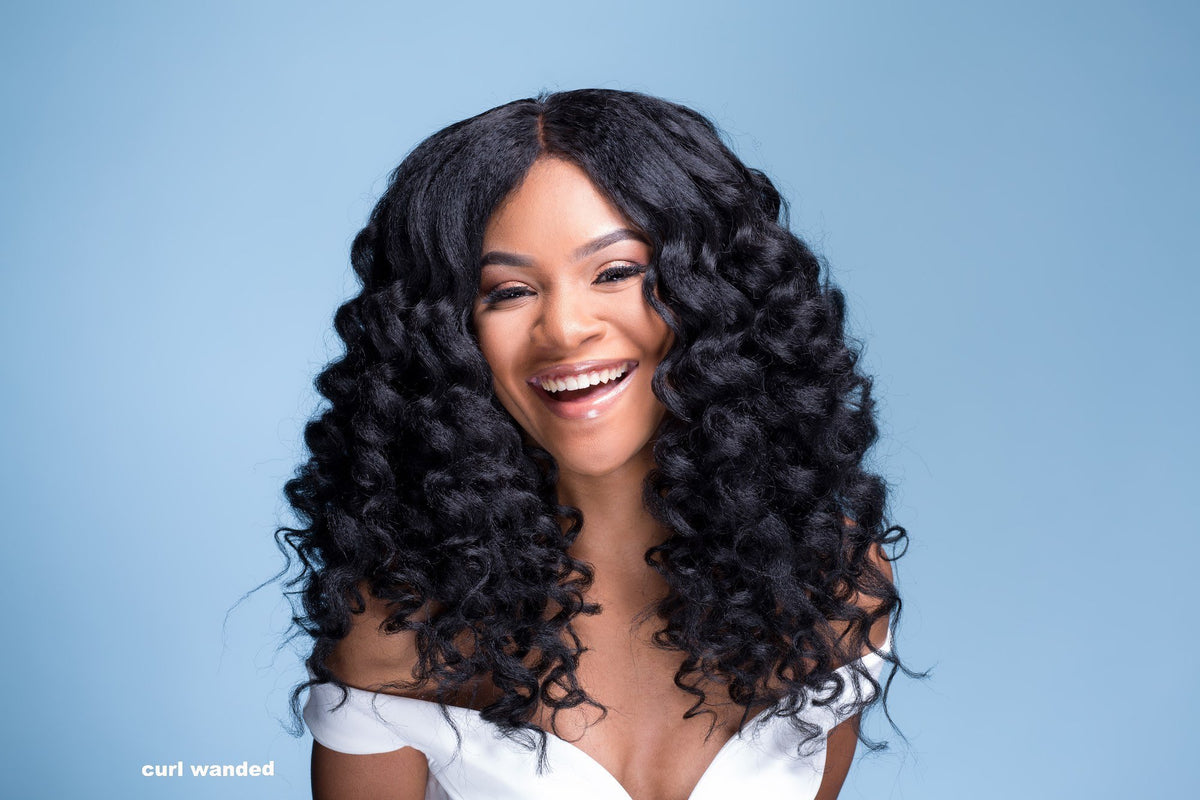
Growing healthy hair starts with clean hair but what if your shampoo only leaves your hair tangled, feeling stripped or extra dry after washing? Many naturals and women with curly hair are ditching traditional shampoos looking for better options to clarifying their hair and scalp without stripping the hair of natural oils or damaging the integrity of their natural crown.
For this reason, co-washing has become a popular method for cleansing your hair and scalp. It is also recommended for textured natural hair extensions, clip-ins, and bundles. But, what exactly is co-washing and how does it benefit your crown?
What is co-washing?
Co-washing refers to the method of cleansing your hair with conditioner or a co-washing cleanser instead of traditional shampoo. Many naturals have chosen to adopt this method of cleansing the hair due to the harsh ingredients and chemicals that can is often found in a number of shampoo products.
Shampoos contain harsh detergents that are formulated to cling to dirt and buildup on the hair to help remove it. Sodium laureth sulfate (SLS) is one of those harsh cleaning agents that can strip your natural hair of essential oils and cause the hair to become dry and brittle. Over time, this could lead to breakage which ultimately affects your ability to retain length.
Shampoos also contain an ingredient called cocamidopropyl betaine (SLES) which is responsible for the bubbles or lather produced when shampooing the hair. Although SLES is a natural ingredient derived from coconut oil, it is typically chemically processed and can contain harsh contaminants that could actually cause damage to the hair over time.
Shampoo vs. Co-Washing Cleansers
Shampoo has the ability to make natural hair frizzy in addition to drying out your natural tresses. When the natural lubrication of the hair is removed or the sebum, the cuticle then has the ability to stand upright instead of lying flat. This is why shampoo is not ideal for naturally kinky, curly and Afro-textured hair types 3C, 4A, 4B, and 4C. Shampoo clings to the surface of the hair and can be hard to rinse from curls and tight coils.
Natural hair can be porous and absorb detergents quickly leading to dry, parched strands. The same thing goes for natural human hair wigs and extensions. It is best to avoid shampoo on wigs to keep the hair moisturized, refreshed and intact.
Co-washing cleansers work the opposite and soften your natural hair to protect it from breakage. The cuticle layer remains unbothered and helps to prevent your hair from becoming tangled. Natural hair wigs tend to become tangled quickly because of all the tightly curled and coiled hair strands. Using a co-washing conditioner to cleanse a naturally textured wig is the best option. Not only will it soften the hair but it will allow the hair to remain flat, easy to manage or style, and not frizzy. For more information on how to co-wash your natural hair extensions check out this how-to video by YoursNaturally11.
It may take some getting used to using a cleanser that barely lathers, but your delicate natural strands will thank you in the long run. In truth, lather is overrated and not a necessity for cleansing the hair and scalp. With a little friction from your fingertips and the right co-washing cleanser, your natural coils will become stronger, healthier and more hydrated.
How to Co-Wash
The key to getting the best benefits of co-washing your natural hair is to use a co-washing cleanser that is specifically formulated for cleansing the hair. Start by slowly introducing your curls to the co-washing method and replacing your shampoo with a creamy, low-lather, or no-lather cleanser. The type of cleanser that you choose is up to you, just be sure to read the label and use a cleansing or clarifying conditioner or co-washing shampoo.
When co-washing your natural hair, start by thoroughly wetting the hair before applying your co-washing shampoo or cleanser. It’s best to wash your hair in the shower to let the water flow through your natural hair. Start the process by focusing on cleansing the scalp first using your fingertips to create friction. Remember, most co-washing cleansers do not produce bubbles so you may be inclined to add more of the product. Instead, try adding more water to the scalp to help loosen any dirt or grime. After rinsing, you can repeat the process until your scalp is clean and move along to cleansing the hair.
When cleansing your natural hair wig with a co-washing product, start at the top of the hair and apply the product moving downward. Glide the co-washing product through the hair with your fingers until the hair is saturated. You can also use a detangling comb to remove any tangles or knots from the wig hair being careful not to destroy the curl pattern.
When using co-washing cleansing products on natural hair wigs, it is best to apply the product to the hair and glide your hands down the hair shaft working the product into the hair.
Types of Co-Washing Cleansers
There are quite a bit of co-washing products on the market. Creamy co-washing conditioners help restore moisture loss in your natural hair while low-lather shampoos can be more clarifying and are best for naturals who tend to use a lot of product or sweat often. The type of co-washing shampoo you use depends on the overall condition and the needs of your natural hair. Below we’ve pulled together recommendations based on your hair’s needs and your level of styling and type of lifestyle.
Creamy Co-washing Conditioners
Creamy co-washing conditioners are usually the same consistency as a moisturizing leave-in-conditioner. They have a rich, creamy formula to help deeply moisturize parched natural hair. Creamy conditioners can be used on natural human hair wigs or synthetic wigs. Pay close attention to the ingredients in your creamy co-washing conditioners. Some ingredients may cause your hair to feel heavy after a wash or simply create more build-up. Explore creamy co-washing conditioners to discover the best one suited for your hair.
No-lather Shampoos and Co-washing Conditioners
No-lather shampoos are rich yet gentle co-washing cleansers that do not produce any bubbles. They help to restore moisture and seal the cuticle to help tame your natural curls. No-lather shampoos feature natural ingredients such as tea tree oil or jojoba oil. There are also many other homemade recipes to explore.
Low-lather Shampoos and Co-Washing Conditioners
Low-lather shampoos produce very little bubbles. They are formulated to clarify the hair and remove buildup without stripping the hair of its natural oils and essential moisture. These shampoos and sulfate-free and produce a small amount of lather. You can use low-lather shampoos to cleanse your natural hair wigs or synthetic wigs. Keep in mind that when using a low-lather shampoo on a synthetic wig too much agitation or rubbing will cause the hair to tangle.
Co-washing is a better option for keeping your natural curls hydrated, soft, and healthy. Shampoo can strip your natural hair leaving it dry and brittle. When deciding between a co-wash or a traditional shampoo wash you have to ask yourself if shampoos are really necessary to the overall health of your hair especially if it is removing the one thing that natural hair needs the most - moisture.
Do you have co-washing shampoo recommendations or tips? Share them with us in the comments below.



